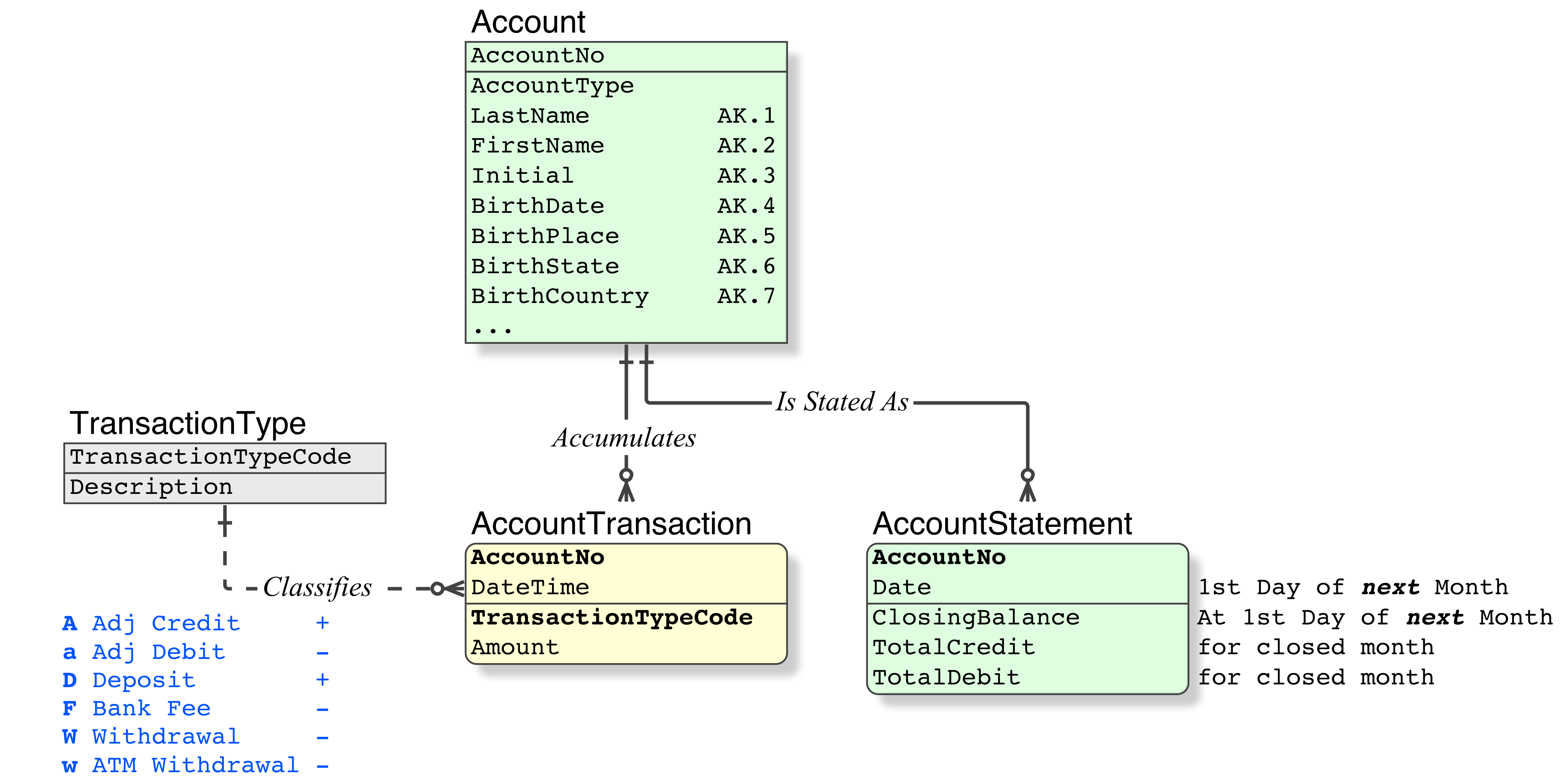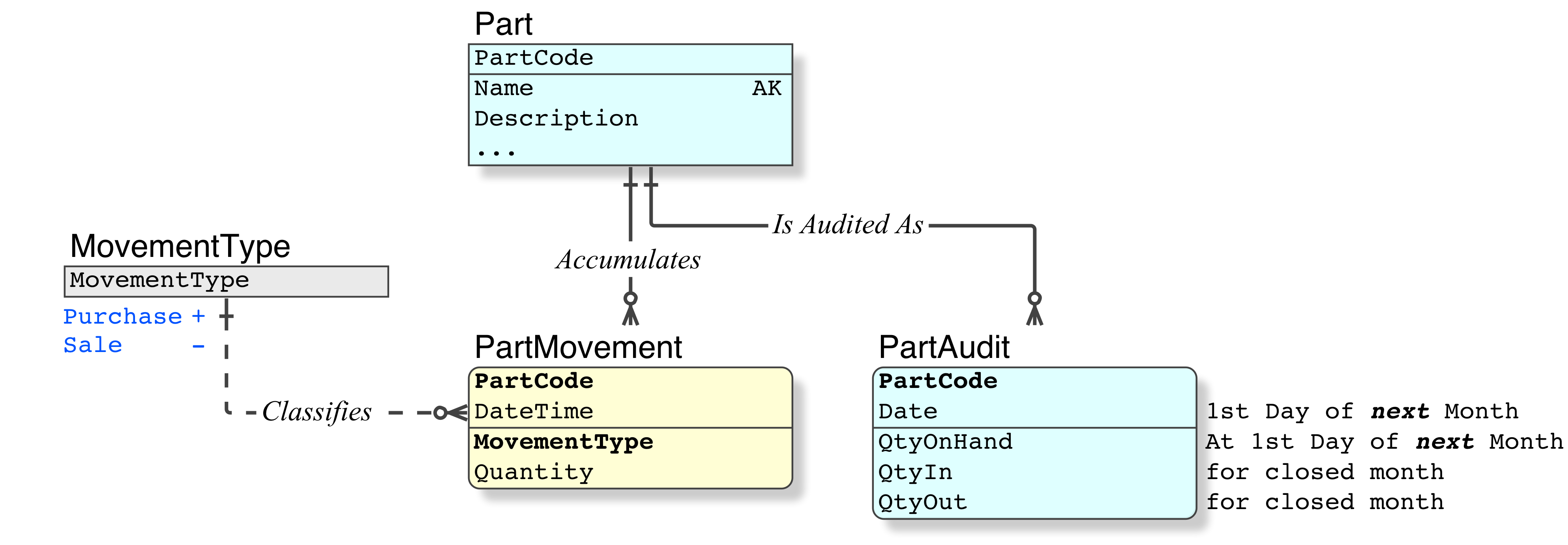Preface
There is an objective truth: Audit requirements. Additionally, when dealing with public funds, there is Legislature that must be complied with.
You don't have to implement the full accounting requirement, you can implement just the parts that you need.
Conversely, it would be ill-advised to implement something other than the standard accounting requirement (the parts thereof) because that guarantees that when the number of bugs or the load exceeds some threshold, or the system expands,you will have to re-implement. A cost that can, and therefore should, be avoided.
It also needs to be stated: do not hire an unqualified, un-accredited "auditor". There will be consequences, the same as if you hired an unqualified developer. It might be worse, if the Tax Office fines you.
Method
The Standard Accounting method in not-so-primitive countries is this. The "best practice", if you will, in others.
This method applies to any system that has similar operations; needs; historic monthly figures vs current-month requirements, such as Inventory Control, etc.
Consideration
First, the considerations.
Never duplicate data.
If the Current Balance can be derived (and here it is simple), do not duplicate it with a summary column. Such a column is a duplication of data. It breaks Normalisation rules. Further, it creates an Update Anomaly, which otherwise does not exist.
If you do use a summary column, whenever the Transactions are updated (as in changed, not as in when a new Transaction is inserted), the summary column value becomes obsolete, so it must be updated all the time anyway. That is the consequence of the Update Anomaly. Which eliminates the value of having it.
External publication.
Separate point. If the balance is published, as in a monthly Bank Statement, such documents usually have legal restrictions and implications, thus that published Current Balance value must not change after publication.
Any change, after the publication date, in the database, of a figure that is published externally, is evidence of dishonest conduct, fraud, etc.
- Such an act, attempting to change published history, is the hallmark of a novice. Novices and mental patients will insist that history can be changed. But as everyone should know, ignorance of the law does not constitute a valid defence.
You wouldn't want your bank, in Apr 2015, to change your Current Balance that they published in their Bank Statement to you of Dec 2014.
That figure has to be viewed as an Audit figure, published and unchangeable.
To correct an error that was made in the past, that is being corrected in the present, the correction or adjustment that is necessary, is made as new Transactions in the current month (even though it applies to some previous month or duration).
This is because that applicable-to month is closed; Audited; and published, because one cannot change history after it has happened and it has been recorded. The only effective month is the current one.
For interest-bearing systems, etc, in not-so-primitive countries, when an error is found, and it has an historic effect (eg. you find out in Apr 2015 that the interest calculated on a security has been incorrect, since Dec 2014), the value of the corrected interest payment/deduction is calculated today, for the number of days that were in error, and the sum is inserted as a Transaction in the current month. Again, the only effective month is the current one.
And of course, the interest rate for the security has to be corrected as well, so that that error does not repeat.
If you find an error in your bank's calculation of the interest on your Savings (interest-bearing) Account, and you have it corrected, you get a single deposit, that constitutes the whole adjustment value, in the current month. That is a Transaction in the current month.
The bank does not: change history; apply interest for each of the historic months; recall the historic Bank Statements; re-publish the historic Bank Statements. No. Except maybe in third world countries.
The same principles apply to Inventory control systems. It maintains sanity.
All real accounting systems (ie. those that are accredited by the Audit Authority in the applicable country, as opposed to the Mickey Mouse "packages" that abound) use a Double Entry system for Transactions, precisely because it prevents a raft of errors, the most important of which is, funds do not get "lost". That requires a General Ledger and Double-Entry Accounting.
- You have not asked for that, you do not need that, therefore I am not describing it here. But do remember it, in case money goes "missing", because that is what you will have to implement, not some band-aid solution; not yet another unaccredited "package".
This Answer services the Question that is asked, which is not Double-Entry Accounting.
For a full treatment of that subject (detailed data model; examples of accounting Transactions; rows affected; and SQL code examples), refer to this Q&A:
Relational Data Model for Double-Entry Accounting.
The major issues that affect performance are outside the scope of this question, they are in the area of whether you implement a genuine Relational Database or not (eg. a 1960's Record Filing System, which is characterised by Record IDs, deployed in an SQL database container for convenience).
The use of genuine Relational Keys, etc will maintain high performance, regardless of the population of the tables.
Conversely, an RFS will perform badly, they simply cannot perform. "Scale" when used in the context of an RFS, is a fraudulent term: it hides the cause and seeks to address everything but the cause. Most important, such systems have none of the Relational Integrity; the Relational Power; or the Relational Speed, of a Relational system.
Implementation
Relational Data Model ? Account Balance

Relational Data Model ? Inventory

Notation
All my data models are rendered in IDEF1X, the Standard for modelling Relational databases since 1993.
My IDEF1X Introduction is essential reading for those who are new to the Relational Model, or its modelling method. Note that IDEF1X models are rich in detail and precision, showing all required details, whereas home-grown models have far less than that. Which means, the notation has to be understood.
Content
For each Account, there will be a ClosingBalance, in a AccountStatement table (one row per AccountNo per month), along with Statement Date (usually the first day of the month) and other Statement details.
This is not a duplicate because it is demanded for Audit and sanity purposes.
For Inventory, it is a QtyOnHand column, in the PartAudit table (one row per PartCode per month)
It has an additional value, in that it constrains the scope of the Transaction rows required to be queried to the current month
Again, if your table is Relational, the Primary Key for AccountTransaction will be (AccountNo, Transaction DateTime) which will retrieve the Transactions at millisecond speeds.
Whereas for a Record Filing System, the "primary key" will be TransactionID, and you will be retrieving the current month by Transaction Date, which may or may not be indexed correctly, and the rows required will be spread across the file. In any case at far less than ClusteredIndex speeds, and due to the spread, it will incur a tablescan.
The AccountTransaction table remains simple (the real world notion of a bank account Transaction is simple). It has a single positive Amount column.
For each Account, the CurrentBalance is:
the AccountStatement.ClosingBalance of the previous month, dated the first of the next month for convenience
(for inventory, the PartAudit.QtyOnHand)
plus the SUM of the AccountTransaction.Amounts in the current month, where the TransactionType indicates a deposit
(for inventory, the PartMovement.Quantity)
minus the SUM of the AccountTransaction.Amounts in the current month, where the `MovementType indicates a withdrawal.
In this Method, the AccountTransactions in the current month, only, are in a state of flux, thus they must be derived. All previous months are published and closed, thus the Audit figure must be used.
The older rows in the AccountTransaction table can be purged. Older than ten years for public money, five years otherwise, one year for hobby club systems.
Of course, it is essential that any code relating to accounting systems uses genuine OLTP Standards and genuine SQL ACID Transactions.
This design incorporates all scope-level performance considerations (if this is not obvious, please ask for expansion). Scaling inside the database is a non-issue, any scaling issues that remain are honestly outside database.
Corrective Advice
These items need to be stated only because incorrect advice has been provided in many SO Answers (and up-voted by the masses, democratically, of course), and the internet is chock-full of incorrect advice (amateurs love to publish their subjective "truths"):
Evidently, some people do not understand that I have given a Method in technical terms, to operate against a clear data model. As such, it is not pseudo-code for a specific application in a specific country. The Method is for capable developers, it is not detailed enough for those who need to be lead by the hand.
They also do not understand that the cut-off period of a month is an example: if your cut-off for Tax Office purposes is quarterly, then by all means, use a quarterly cut-off; if the only legal requirement you have is annual, use annual.
Even if your cut-off is quarterly for external or compliance purposes, the company may well choose a monthly cut-off, for internal Audit and sanity purposes (ie. to keep the length of the period of the state of flux to a minimum)
与恶龙缠斗过久,自身亦成为恶龙;凝视深渊过久,深渊将回以凝视…


